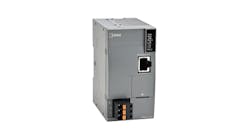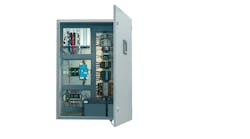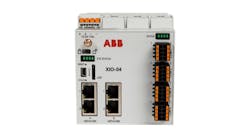Azad Jafari, I/O product manager, Beckhoff Automation: IO-Link supports device profiles that define the structure and functionality of multi-sensor devices, enabling the integration and management of multiple sensors within a single device. Each sensor can be individually parameterized for settings such as measurement range, sampling rate and thresholds via the IO-Link master or software tools.
IO-Link allows both cyclic—regularly scheduled—and acyclic—on-demand—communication for continuous monitoring and specific data retrieval or configuration commands. Multi-sensor devices use sub-addresses to identify and access each sensor, with the IO-Link master handling data requests and command communication. These devices can store multiple sets of parameters for easy retrieval and modification.
Detailed diagnostic information for each sensor aids in performance monitoring and maintenance. IO-Link ensures compatibility across various multi-sensor devices from different manufacturers, standardizing configuration and data access.
What cable topology options are available with IO-Link? Can I use daisy-chain connections, or is a dedicated point-to-point connection required for each device?
Azad Jafari, I/O product manager, Beckhoff Automation: IO-Link primarily uses a point-to-point connection where each device connects directly to an IO-Link master port for reliable communication and individual diagnostics. In a star topology, multiple devices connect to a central IO-Link master. IO-Link can also integrate with other fieldbus systems like EtherCAT, maintaining point-to-point connections to the master within a larger network.
How does IO-Link integrate with different fieldbus protocols commonly used in automation systems?
Azad Jafari, I/O product manager, Beckhoff Automation: IO-Link integrates with fieldbus protocols like EtherCAT through IO-Link masters, which act as gateways between IO-Link devices and the main fieldbus network. The IO-Link master collects data from connected devices and translates it into the fieldbus protocol format, transmitting it to the central controller or PLC.
This integration allows for centralized configuration, diagnostics and reliable communication. Standardized interfaces ensure compatibility and seamless setup, combining IO-Link's detailed device-level communication with the high-speed, real-time data transfer of fieldbus networks like EtherCAT.
What are the cost implications of implementing IO-Link compared to traditional wiring methods? Is the upfront cost of IO-Link devices offset by long-term benefits like reduced wiring complexity and improved diagnostics?
Azad Jafari, I/O product manager, Beckhoff Automation: While the initial investment in IO-Link technology may be higher, the long-term savings from reduced wiring complexity, improved diagnostics, simplified maintenance and increased productivity often outweigh these costs. The overall cost-effectiveness of an IO-Link implementation depends on the specific application and scale of the overall automation system, but many users find the long-term benefits justify the initial expenditure.
Anything else that you'd like to add about IO-Link?
Azad Jafari, I/O product manager, Beckhoff Automation: IO-Link integration with EtherCAT enhances automation systems by combining detailed device-level communication and diagnostics of IO-Link with the high-speed, real-time capabilities of EtherCAT for highly efficient data transfer and system management. Whether engineers require a field-mounted IO-Link gateway, a standard DIN rail mounted option or even a pluggable terminal to reduce wiring complexity, they often find that flexible solutions help future-proof their applications. They can build the overall machine or system using fast EtherCAT and PC-based control and then add or update sensors later as the project evolves using IO-Link.
Tell us about one of your organization’s state-of-the-art IO-Link offerings.







